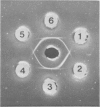Abstract
Two dissimilar proteins, designated as components I and II, of botulinum C2 toxin elaborated by strain 92-13 were purified to a homogeneous state. The molecular weights determined by sodium dodecyl sulfate gel electrophoresis were 55,000 for component I and 105,000 for component II. Whereas each component showed no or feeble toxicity even after being treated with trypsin, the toxicity was elicited when these two components were mixed and trypsinized. The toxicity of the mixture of components I and II at a ratio of 1:2.5 on a protein basis was 2.2 X 10(4) mouse intraperitoneal 50% lethal doses per mg of protein and increased by 2,000 times or more when treated with trypsin. These results indicate that the molecular characteristics of botulinum C2 toxin differ from those of the toxin of Clostridium botulinum types A through F in that C2 toxin is constructed with two separate protein components, which are not covalently held together, and that its toxicity is elicited by cooperation of the two components.
Full text
PDF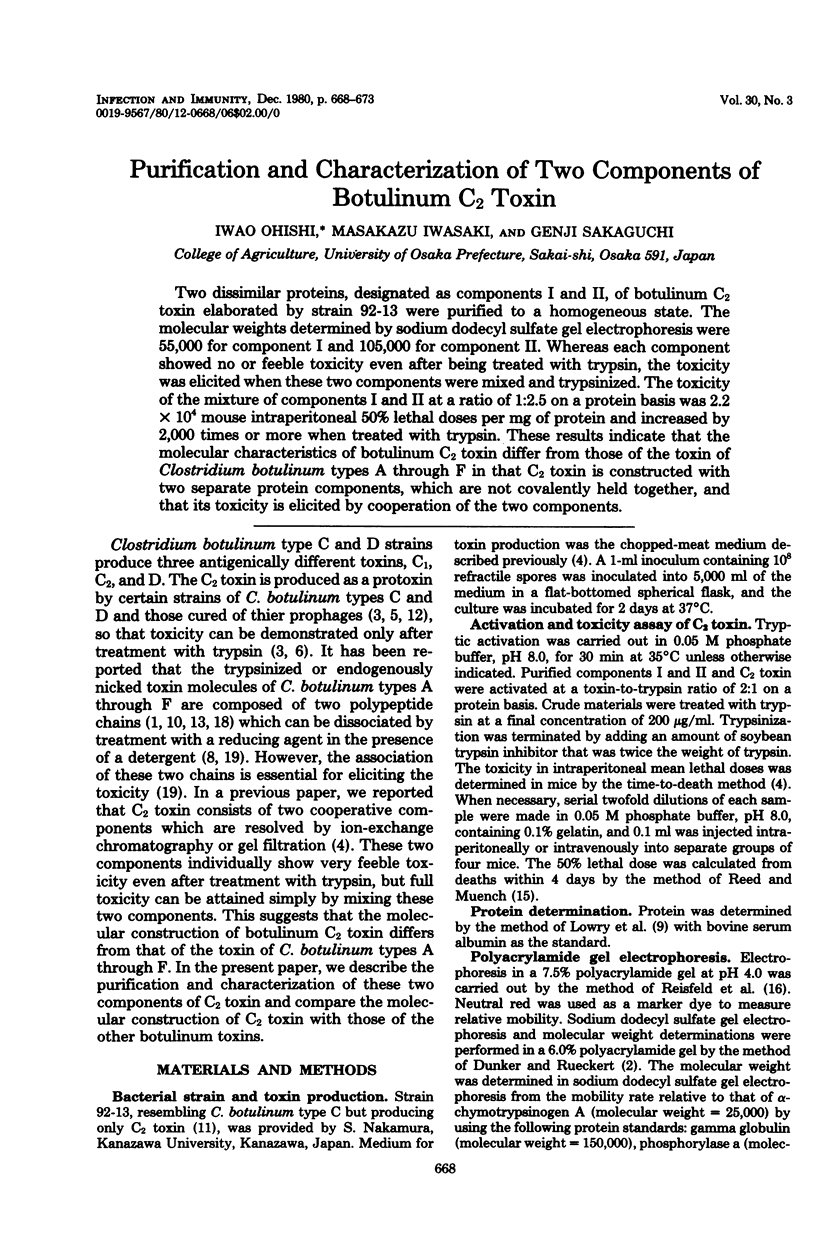
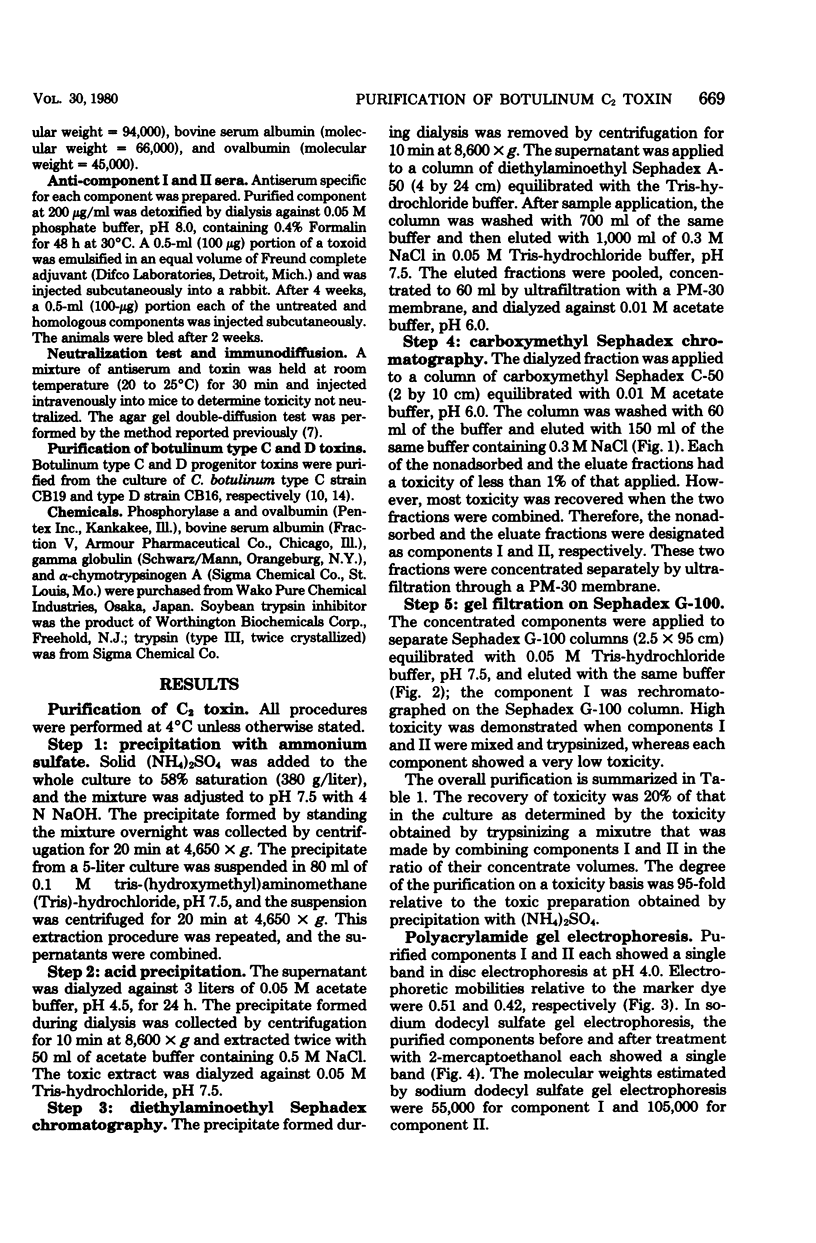
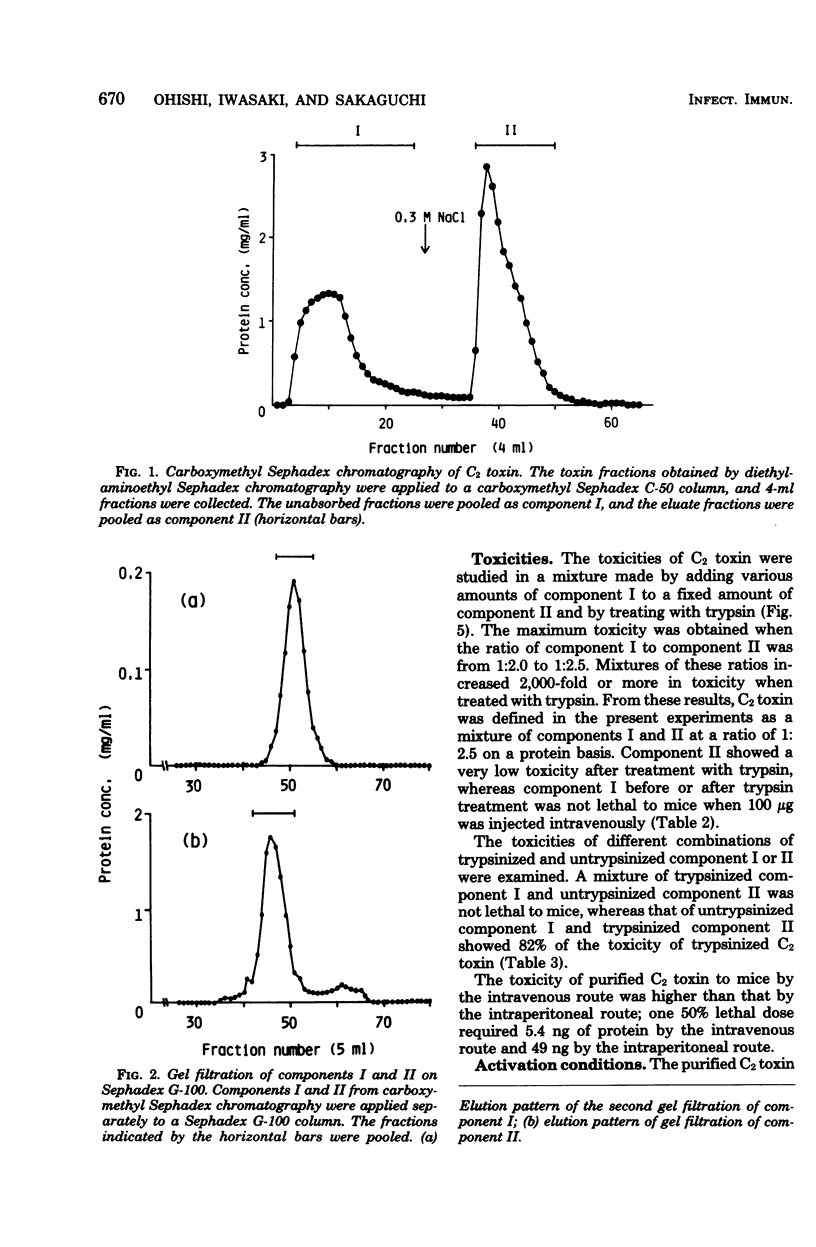
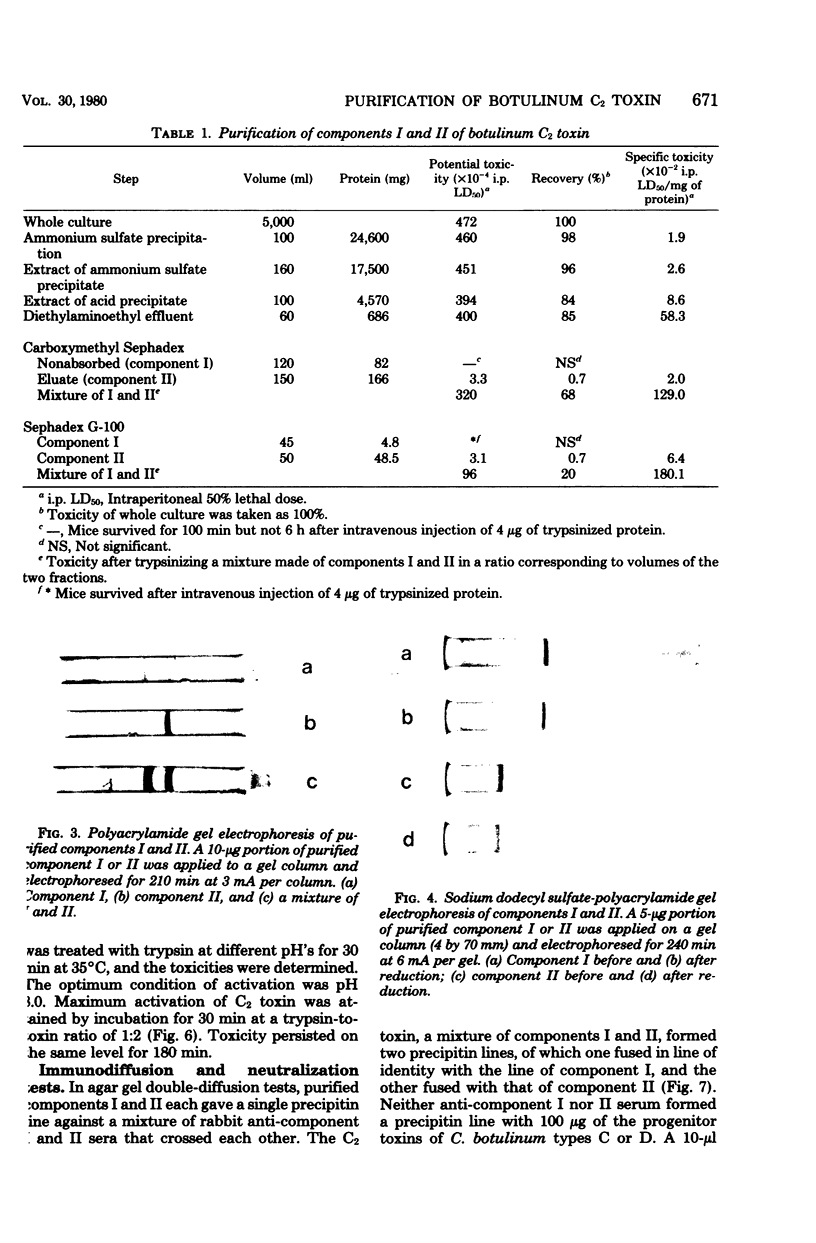
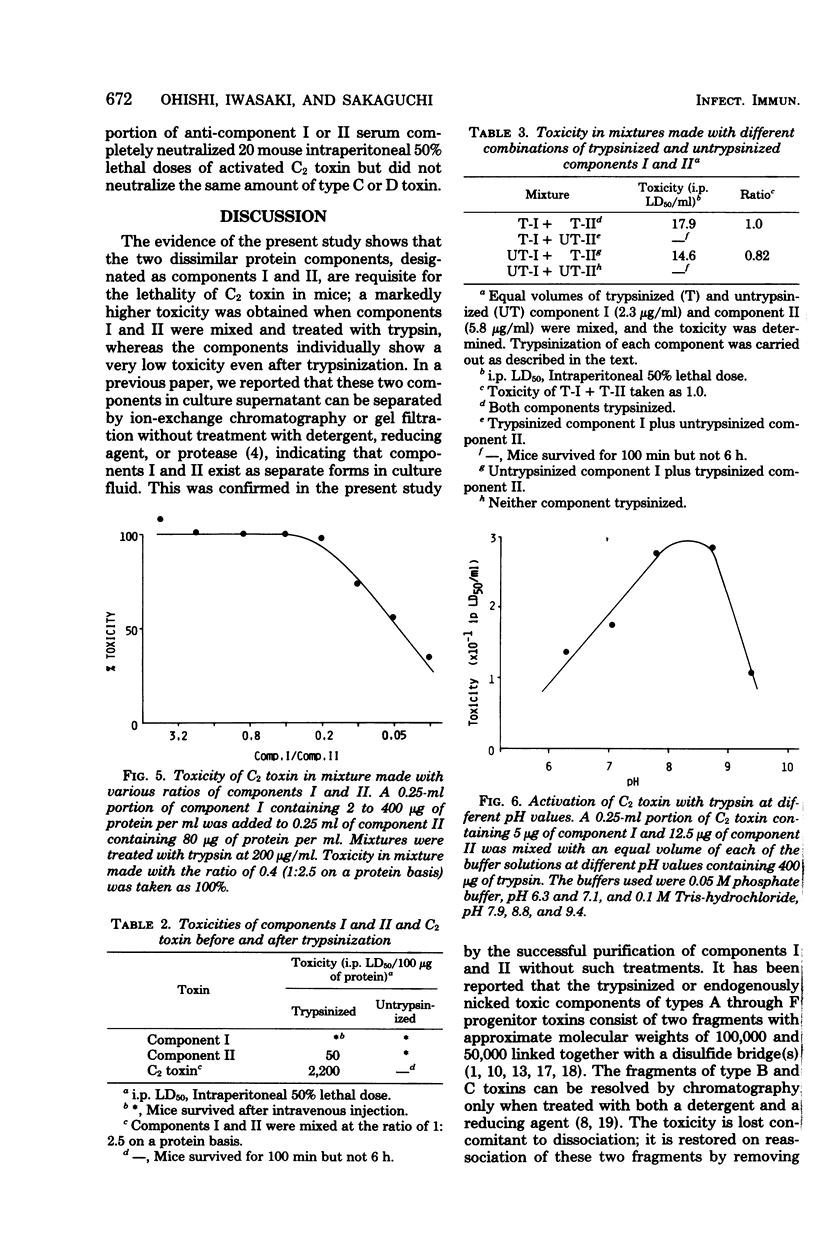
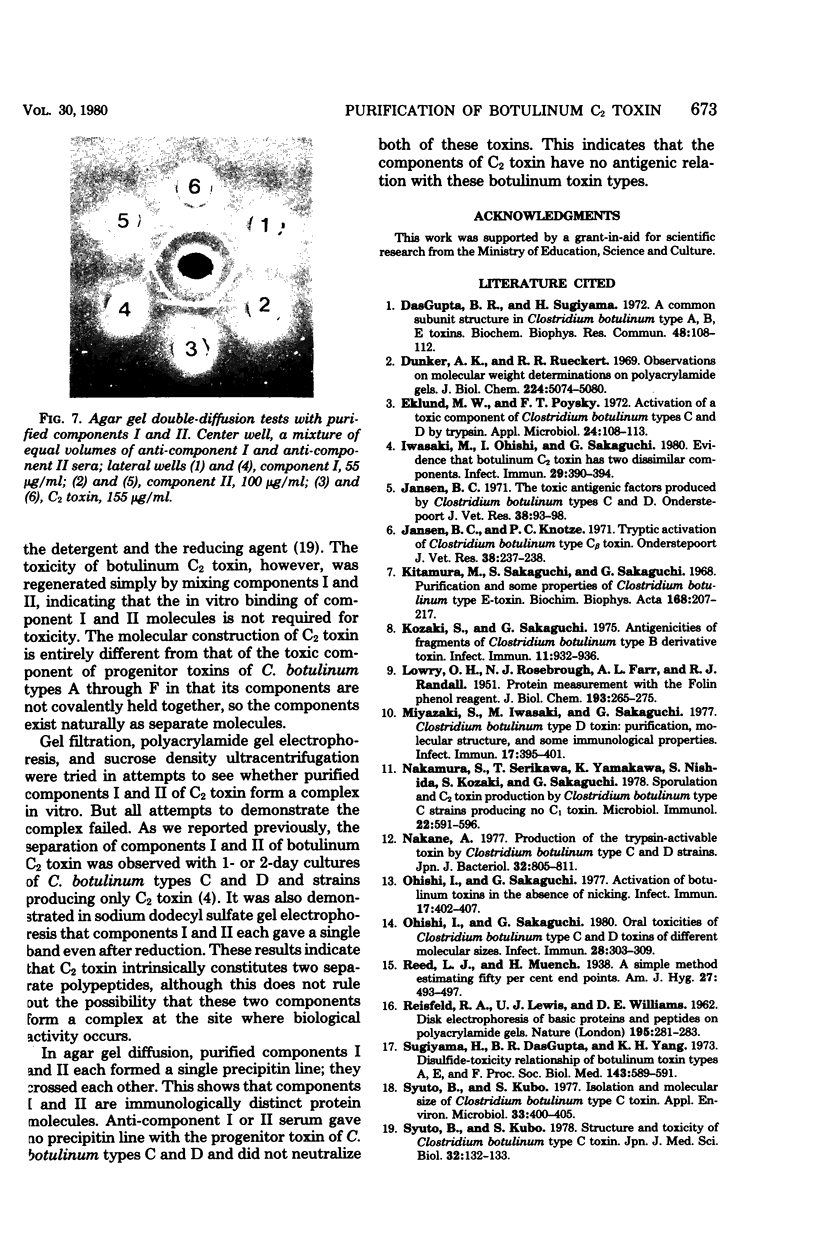
Images in this article
Selected References
These references are in PubMed. This may not be the complete list of references from this article.
- DasGupta B. R., Sugiyama H. A common subunit structure in Clostridium botulinum type A, B and E toxins. Biochem Biophys Res Commun. 1972 Jul 11;48(1):108–112. doi: 10.1016/0006-291x(72)90350-6. [DOI] [PubMed] [Google Scholar]
- Dunker A. K., Rueckert R. R. Observations on molecular weight determinations on polyacrylamide gel. J Biol Chem. 1969 Sep 25;244(18):5074–5080. [PubMed] [Google Scholar]
- Eklund M. W., Poysky F. T. Activation of a toxic component of Clostridium botulinum types C and D by trypsin. Appl Microbiol. 1972 Jul;24(1):108–113. doi: 10.1128/am.24.1.108-113.1972. [DOI] [PMC free article] [PubMed] [Google Scholar]
- Iwasaki M., Ohishi I., Sakaguchi G. Evidence that botulinum C2 toxin has two dissimilar components. Infect Immun. 1980 Aug;29(2):390–394. doi: 10.1128/iai.29.2.390-394.1980. [DOI] [PMC free article] [PubMed] [Google Scholar]
- Jansen B. C., Knoetze P. C. Tryptic activation of Clostridium botulinum type C beta toxin. Onderstepoort J Vet Res. 1971 Dec;38(4):237–238. [PubMed] [Google Scholar]
- Jansen B. C. The toxic antigenic factors produced by Clostridium botulinum types C and D. Onderstepoort J Vet Res. 1971 Jun;38(2):93–98. [PubMed] [Google Scholar]
- Kitamura M., Sakaguchi S., Sakaguchi G. Purification and some properties of Clostridium botulinum type-E toxin. Biochim Biophys Acta. 1968 Oct 21;168(2):207–217. doi: 10.1016/0005-2795(68)90144-x. [DOI] [PubMed] [Google Scholar]
- Kozaki S., Sakaguchi G. Antigenicites of fragments of Clostridium botulinum type B derivative toxin. Infect Immun. 1975 May;11(5):932–936. doi: 10.1128/iai.11.5.932-936.1975. [DOI] [PMC free article] [PubMed] [Google Scholar]
- LOWRY O. H., ROSEBROUGH N. J., FARR A. L., RANDALL R. J. Protein measurement with the Folin phenol reagent. J Biol Chem. 1951 Nov;193(1):265–275. [PubMed] [Google Scholar]
- Miyazaki S., Iwasaki M., Sakaguchi G. Clostridium botulinum type D toxin: purification, molecular structure, and some immunological properties. Infect Immun. 1977 Aug;17(2):395–401. doi: 10.1128/iai.17.2.395-401.1977. [DOI] [PMC free article] [PubMed] [Google Scholar]
- Nakamura S., Serikawa T., Yamakawa K., Nishida S., Kozaki S., Sakaguchi G. Sporulation and C2 toxin production by Clostridium botulinum type C strains producing no C1 toxin. Microbiol Immunol. 1978;22(10):591–596. doi: 10.1111/j.1348-0421.1978.tb00409.x. [DOI] [PubMed] [Google Scholar]
- Nakane A. [Production of the trypsin-activable toxin by Clostridium botulinum type C and D strains (author's transl)]. Nihon Saikingaku Zasshi. 1977 Nov;32(6):805–811. [PubMed] [Google Scholar]
- Ohishi I., Sakaguchi G. Activation of botulinum toxins in the absence of nicking. Infect Immun. 1977 Aug;17(2):402–407. doi: 10.1128/iai.17.2.402-407.1977. [DOI] [PMC free article] [PubMed] [Google Scholar]
- Ohishi I., Sakaguchi G. Oral toxicities of Clostridium botulinum type C and D toxins of different molecular sizes. Infect Immun. 1980 May;28(2):303–309. doi: 10.1128/iai.28.2.303-309.1980. [DOI] [PMC free article] [PubMed] [Google Scholar]
- REISFELD R. A., LEWIS U. J., WILLIAMS D. E. Disk electrophoresis of basic proteins and peptides on polyacrylamide gels. Nature. 1962 Jul 21;195:281–283. doi: 10.1038/195281a0. [DOI] [PubMed] [Google Scholar]
- Sugiyama H., Das Gupta R., Yang K. H. Disulfide-toxicity relationship of botulinal toxin types A, E, and F. Proc Soc Exp Biol Med. 1973 Jul;143(3):589–591. doi: 10.3181/00379727-143-37372. [DOI] [PubMed] [Google Scholar]
- Syuto B., Kubo S. Isolation and molecular size of Clostridium botulinum type C toxin. Appl Environ Microbiol. 1977 Feb;33(2):400–405. doi: 10.1128/aem.33.2.400-405.1977. [DOI] [PMC free article] [PubMed] [Google Scholar]
- Syuto B., Kubo S. Structure and toxicity of Clostridium botulinum type C toxin. Jpn J Med Sci Biol. 1979 Apr;32(2):132–133. [PubMed] [Google Scholar]





